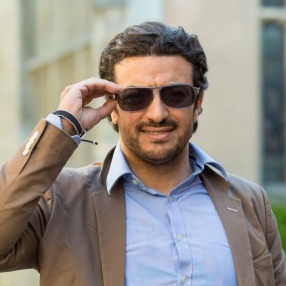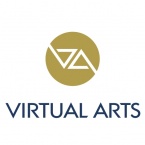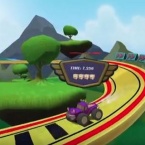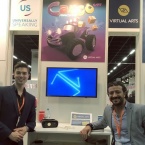The Virtual Report: Please tell us how Virtual Arts got started. What's your background?
Nizar Romdan: We are a team of ex-ARM employees, including Geomerics, the middleware company that ARM bought, and ex-Sony Guerrilla Cambridge people. We founded the company officially in December 2016. That’s when we incorporated. And as of today, we are 11 people – five from ARM and six from Guerrilla. So we bring a huge amount of experience. More than 10 years from ARM in all the tools, demos, tech, working with leading game engine companies and studios. And the team from Sony bring more than 20 years’ experience in making games – high profile games that have won BAFTA awards like Little Big Planet in 2000, and more recently, Killzone: Mercenary or RIGS, which was a VR title that was part of the launch of PlayStation VR that was done by the Cambridge Guerrilla team.
So huge experience on both sides: the tech front, the content front; mobile through ARM, and also higher platforms like consoles and PC with Sony. So we have experience in everything! We’re based in Cambridge. A great city for education. But also a leading hub for innovation and tech – not only in the UK, but probably all across Europe. The "Silicon Fen" is only 50 minutes from London.
What challenges do you see in VR and AR that you're trying to solve at Virtual Arts?
There are lots of them, but there are two main umbrella challenges.
The first one: for any new platform to be successful, there needs to be content. That's no secret. That content needs to be great, and it needs to be diverse so that your platform succeeds.
But then: these new platforms are very challenging technically too – VR, AR and MR are not like the previous platforms. Or anything we’ve seen before! They push the boundaries for everything, particularly for mobile battery-powered devices.
It's our vision to solve these with Virtual Arts.
The first problem: we plan to develop a strong portfolio of mobile content: VR, AR and MR. And we’ll cover a wide range of use cases. So we’d be doing, of course, games. Also interactive experiences where you interact within the world; not necessarily playing, but you’re engaging and learning, or maybe just enjoying the experience. And also animations, short features, and so on.
So we’ll diversify, but also we'll target a wide range of users. We will have a casual appeal for our content. We will not be going hardcore, violence, horror! No, we will offer a very casual appeal to a wide majority of consumers. Because we believe in bringing VR, AR and MR to the masses.
The second problem is the technical challenge. We will be developing the best tech for VR, AR and MR. This will be written from scratch with those platforms. Not like previous technology engines or tools that have been developed for mobile or PC or consoles, and then imported to VR. Our tech will be built from scratch for the new platforms.
And we will focus on mobile. We believe if we want to bring all this to everybody, people experience content now on internet-enabled mobile devices. So mobile VR, mobile AR – I guess AR is inherently mobile. And then MR, of course. So we will focus on mobile, but it’ll be scalable across all headsets. What we believe in is bringing in great content and great experiences to entry-level mobile.
Cardboard, for instance?
Cardboard, or a fifty-dollar kind of smartphone experience – we will enable that. And that’s even more important to have good tech; because if you use existing tech, that can maybe perform only on the high-end scale of the spectrum. So we’re writing content in a way will be super, super optimum so that we can deliver a great experience to an entry level smartphone, like the vast volume worldwide. It’s estimated that more than one billion of these will be selling in a year by 2020!
Does that mean that your intended market and scope is international? Cardboard is huge in China, for instance.
Yes: worldwide. We have great connections with China. It’s a massive market. Through ARM, we have great connections in China.
But not just China. Everywhere, I think. Wherever the tech can be used. And I think people will experience amazing content for the first time worldwide through VR and AR. Imagine witnessing, for instance, Ancient Rome. Many people in the world would never be able to travel to Italy. (And experiencing it when it was in its glory days; even for the wealthy that's impossible!) Through virtual reality we can enable people to have experiences they otherwise cannot have, because economically maybe they cannot… or also physically it might be impossible!
Games, too, and through animation. We will be able to enable anyone in the world to have that. So that’s what we believe in: mass market; we believe in mobile; and we believe in bringing this to the entry level of the spectrum, to enable it for everyone in the world.
But that doesn’t mean that we will not provide great features for the high-end subset of the market in mobile. Or why not other platforms? Because you can always get a mouse to fatten up to make it fit the room, but it’s almost impossible to get an elephant to slim down to fit in a car. You can always intend to work on a more powerful platform, rather than the other way around. So if we had to port to a PC or a console or whatever, that’s easy.
That’s our vision. And for that, we’ll be focusing on mobile devices. In the West, that’s primarily Gear VR. And Daydream. That's nearly a year old now! Cardboard, of course – we are huge, huge believers in Cardboard. And Cardboard today is the most ugly, clunky mobile device, but we think in the future they can be as cool and small and elegant as the disposable 3D disposable glasses you can get at a movie theatre. They’re super-slim, disposable; you use them and you throw them. They’re available anywhere like, I suppose, disposable coffee cups.
On the AR and MR front, we’ll be focusing on existing devices. For AR, these are primarily based on tablets and smartphones. You have mainly two categories here. You have the new devices that are emerging, like Project Tango by Google, which are based on specialised depth cameras to allow tracking of the objects in AR. Or the standard devices that you see, like a 2D camera, like any mobile phone, whether it’s iOS on iPhone or Android, and tablets.
On the mixed reality front, we’ll be supporting the new headsets that are appearing. The HoloLens, which is probably the first flagship product in that category. But other devices that will appear, like the highly anticipated Magic Leap device, and we believe there will be plenty of those in the future.
So our focus is really on mobile VR, AR and MR.






